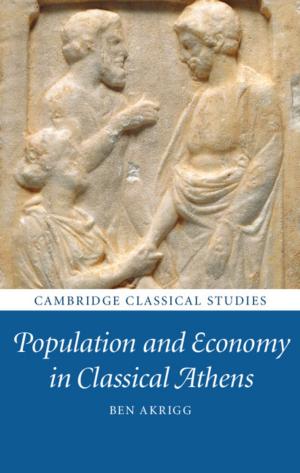Greek Myths in Roman Art and Culture
Imagery, Values and Identity in Italy, 50 BC–AD 250
Nonfiction, Art & Architecture, Art History, General Art, History| Author: | Zahra Newby | ISBN: | 9781316718803 |
| Publisher: | Cambridge University Press | Publication: | September 15, 2016 |
| Imprint: | Cambridge University Press | Language: | English |
| Author: | Zahra Newby |
| ISBN: | 9781316718803 |
| Publisher: | Cambridge University Press |
| Publication: | September 15, 2016 |
| Imprint: | Cambridge University Press |
| Language: | English |
Images of episodes from Greek mythology are widespread in Roman art, appearing in sculptural groups, mosaics, paintings and reliefs. They attest to Rome's enduring fascination with Greek culture, and its desire to absorb and reframe that culture for new ends. This book provides a comprehensive account of the meanings of Greek myth across the spectrum of Roman art, including public, domestic and funerary contexts. It argues that myths, in addition to functioning as signifiers of a patron's education or paideia, played an important role as rhetorical and didactic exempla. The changing use of mythological imagery in domestic and funerary art in particular reveals an important shift in Roman values and senses of identity across the period of the first two centuries AD, and in the ways that Greek culture was turned to serve Roman values.
Images of episodes from Greek mythology are widespread in Roman art, appearing in sculptural groups, mosaics, paintings and reliefs. They attest to Rome's enduring fascination with Greek culture, and its desire to absorb and reframe that culture for new ends. This book provides a comprehensive account of the meanings of Greek myth across the spectrum of Roman art, including public, domestic and funerary contexts. It argues that myths, in addition to functioning as signifiers of a patron's education or paideia, played an important role as rhetorical and didactic exempla. The changing use of mythological imagery in domestic and funerary art in particular reveals an important shift in Roman values and senses of identity across the period of the first two centuries AD, and in the ways that Greek culture was turned to serve Roman values.















